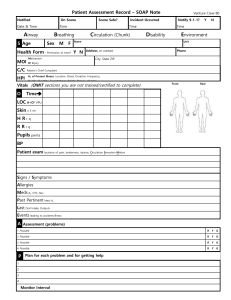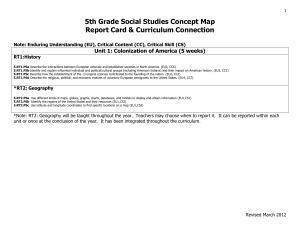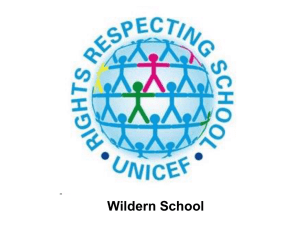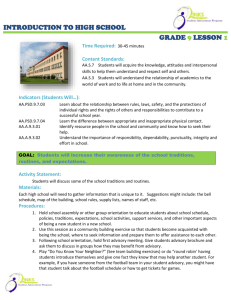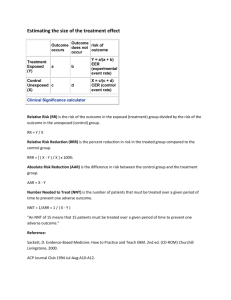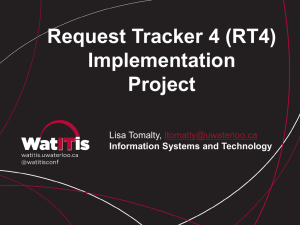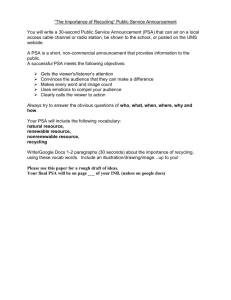Critical Content/Concept Web
advertisement
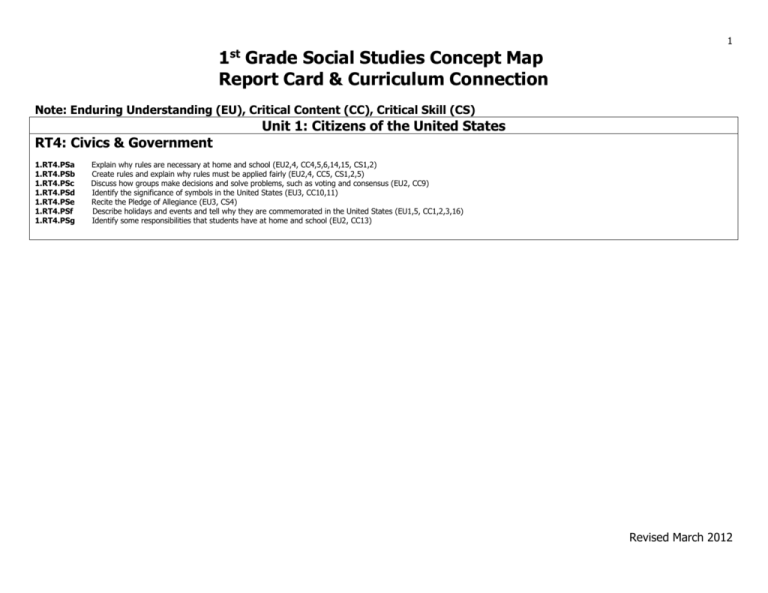
1 st 1 Grade Social Studies Concept Map Report Card & Curriculum Connection Note: Enduring Understanding (EU), Critical Content (CC), Critical Skill (CS) Unit 1: Citizens of the United States RT4: Civics & Government 1.RT4.PSa 1.RT4.PSb 1.RT4.PSc 1.RT4.PSd 1.RT4.PSe 1.RT4.PSf 1.RT4.PSg Explain why rules are necessary at home and school (EU2,4, CC4,5,6,14,15, CS1,2) Create rules and explain why rules must be applied fairly (EU2,4, CC5, CS1,2,5) Discuss how groups make decisions and solve problems, such as voting and consensus (EU2, CC9) Identify the significance of symbols in the United States (EU3, CC10,11) Recite the Pledge of Allegiance (EU3, CS4) Describe holidays and events and tell why they are commemorated in the United States (EU1,5, CC1,2,3,16) Identify some responsibilities that students have at home and school (EU2, CC13) Revised March 2012 2 Critical Content/Concept Web Unit Topic: Citizens of the United States Conceptual Lens: Grade: National Identity 1st Government Necessity of rules Group decision making Symbols in the U.S.A Pledge of Allegiance U.S. holidays and events Responsibilities at home and school Rules Events commemorated in the Unites States Unit Overview Students will look at their role as a citizen of the United States through the lens of national identity. They will examine patriotism by looking at national holidays and patriotic symbols. Students will also look at their role as a citizen of the United States. Unit Topic: Citizens of the United States Revised March 2012 3 Grade: 1st Subject: Social Studies Unit: Citizens of the Untied States Lens: National Identify Enduring Understandings Guiding Questions RT4 Civics & Government 1. A country recognizes national holidays to promote unity. a. What is a national holiday? b. Why do we recognize national holidays? Performance Standards & State Standards c. How are national holidays different from other holidays? 1.RT4.PSf Describe holidays and events and tell why they are commemorated in the United States (4.2.3) d. For each national holiday-Independence Day, Veterans Day, Civil Rights Day, and President’s Day: When is _______ day recognized? Why do we recognize _______day? Who are the people associated with this holiday? How did these people impact our country? 2. Citizens have rights and responsibilities. a. Why are rules necessary in homes, classrooms, lunchrooms, in the community, at games, and recess? Performance Standards & State Standards b. How are rules made? 1.RT4.PSa Explain why rules are necessary at home and school (4.1.1) 1.RT4.PSb Create rules and explain why rules must be applied fairly (4.1.2) c. Why should rules be followed? 1.RT4.PSc Discuss how groups make decisions and solve problems, such as voting and d. Who enforces the rules? consensus (4.1.3) 1.RT4.PSg Identify some responsibilities that students have at home and school (4.3.2) e. What is a citizen? f. What does it mean to be, a responsible citizens? State Standards Only 4.1.4 Identify personal traits, such as courage, honesty, and responsibility g. Who are some individuals that are helpful in your life? 4.3.1 Identify individuals who are helpful to people in their everyday lives (e.g. fireman, policeman, etc.) 3. A country recognizes patriotic symbols and songs to a. What are some patriotic symbols? encourage patriotism. b. Where did they come from? Performance Standards & State Standards 1.RT4.PSd Identify the significance of symbols in the United States (4.2.1) 1.RT4.PSe Recite the Pledge of Allegiance (4.2.2) 4. Rules establish order in a family. Performance Standards & State Standards 1.RT4.PSa Explain why rules are necessary at home and school (4.1.1) 1.RT4.PSb Create rules and explain why rules must be applied fairly (4.1.2) a. b. c. d. What is a rule? What kinds of rules are established in families? Why do families have rules? How do the rules affect the decisions families make? Revised March 2012 4 e. How do rules and decisions affect the whole family? f. Do families need rules? Why/Why not? 5. Family members have responsibilities that help them work together. Performance Standards & State Standards 1.RT4.PSf Name some responsibilities that students have at home and school (4.3.2) State Standards Only 4.1.4 Identify personal traits such as courage, honesty and responsibility 4.3.1 Identify individuals who are helpful to people in their everyday lives a. What are chores? b. Do families share chores? c. Is it important for families to share chores? Why/Why not? d. What does it mean to be courageous, honest and responsible? Revised March 2012 5 Grade: 1st Subject: Social Studies Unit: Citizens of the United States Lens: National Identity Critical Content and Skills AC = Assessment Code: Critical Content (CC) - Students will know… 1. National holidays 2. Difference between national holidays and other holidays 3. People associated with certain holidays and their impact on our country (e.g. Abraham Lincoln, George Washington, Thomas Jefferson, etc.) 4. Importance of rules 5. How rules are made (eg. voting, command decisions, etc.) 6. People in authority enforce rules 7. The definition of a citizen 8. What a responsible citizen is 9. How to make decisions and solve problems 10. The significance of patriotic symbols 11. The significance of patriotic songs 12. Individuals who are helpful to people in their everyday lives 13. A variety of responsibilities that students have at home and at school 14. The definition of a rule 15. The relationships between chores and responsibilities 16. Different events that are commemorated in the United States AC Q – Quizzes O – Observations D – Dialogues T - Tests P - Prompts WS – Work Samples SA – Student Self-Assessment Critical Skills (CS) - Students will be able to … 1. Participate in making rules. 2. Follow rules. 3. Participate in compromising and negotiating. 4. Recite the Pledge of Allegiance. 5. Create rules and explain why rules must be applied fairly. AC Revised March 2012 6 1st Grade Social Studies Concept Map Report Card & Curriculum Connection Note: Enduring Understanding (EU), Critical Content (CC), Critical Skill (CS) Unit 2: My Own Family Past & Present RT1: History 1.RT1.PSa 1.RT1.PSb 1.RT1.PSc 1.RT1.PSd Recognize that each person belongs to many groups such as family, school, friends and neighborhood (EU5, CC1) Compare differences in the ways American families live today to how they lived in the past (EU6, CS1) Use timelines to show personal and family history (EU6, CS6) Compare personal histories, pictures, and music of other selected times and places in America’s past (EU4,7, CS2) RT3: Economics 1.RT3.PSa 1.RT3.PSb 1.RT3.PSc 1.RT3.PSd Identify the basic needs of people such as food, clothing, and shelter (EU1,2, CC2, CS3) Identify ways people meet their needs by sharing, trading, and using money to buy goods and services (EU3, CC2,3, CS5) Name things that people may want but do not need and explain the difference (EU1,2, CC3, CS4) Identify ways to save money for future needs and wants (EU3, CC9) Revised March 2012 7 Critical Content/Concept Web Unit Topic: My Own Family Past & Present Conceptual Lens: Grade: Unit Overview Interdependence 1st History Groups Personal histories American lifestyles past and present Timelines Family history Students will understand the characteristics of families. Students will explore how families are interdependent upon each family member to make decisions, to meet needs and wants, and to communicate. Unit Topic: My Own Family Economics Basic needs Ways to meet basic needs Want v. need Saving money Revised March 2012 8 Grade: 1st Subject: Social Studies Unit: My Own Family Past & Present Lens: Interdependence Enduring Understandings Guiding Questions RT3 Economics 1. Basic Needs (food, clothing, shelter, love) stay the a. What are needs? same, wants of families change over time. b. What are wants? c. How are the needs and wants similar and/or different Performance Standards & State Standards among families? 1.RT3.PSa Identify the basic needs of people such as food, clothing, and shelter (3.1.1) d. Have the needs and wants of families changed over 1.RT3.PSc Name things that people may want but do not need and explain the difference (3.1.3) time? e. How have the needs and wants of families changed over time? 2. Families work together to make choices depending on their needs and wants. Performance Standards & State Standards 1.RT3.PSa Identify the basic needs of people such as food, clothing, and shelter (3.1.1) 1.RT3.PSc Name things that people may want but do not need and explain the difference (3.1.3) 3. Families use money to purchase goods and services. Performance Standards & State Standards 1.RT3.PSb Identify ways people meet their needs by sharing, trading, and using money to buy goods and services (3.1.2) 1.RT3.PSd Identify ways to save money for future needs and wants (3.4.1) a. b. c. d. e. What are your family’s needs? What are your family’s wants? How do families work together to meet needs? What is a choice? What is a compromise? a. b. c. d. e. f. g. h. What is money? What is a good? What is a service? What does it mean to consume? What is a consumer? What kinds of services do families consume? How do families purchase their goods and services? What does it mean to save? What are ways your family can save for needs and wants? (e.g. cut back in other areas, savings accounts, etc.) Revised March 2012 9 Grade: 1st Subject: Social Studies Unit: My Own Family Past & Present Lens: Interdependence Enduring Understandings Guiding Questions RT1 History 4. Family ancestors influence traditions. a. What is a tradition? (How holidays are celebrated?) b. What is an ancestor? Performance Standards & State Standards c. What kinds of traditions do families have? 1.RT1.PSd Compare personal histories, pictures, and music of other selected times and places in America’s past (1.1.4) d. Where do traditions originate? e. How did ancestors influence traditions? 5. Families are diverse. Performance Standards & State Standards 1.RT1.PSa Recognize that each person belongs to many groups such as family, school, friends and neighborhood (1.1.1) 1.RT1.PSd Compare personal histories, pictures, and music of other selected times and places in America’s past (1.1.4) a. What is a family? b. How are families different? (appearance, structure, size) c. How is a family a group? d. What other groups are you a part of in addition to your family? (e.g. school, friends, neighborhood, sports, etc.) 6. Families change over time. Performance Standards & State Standards 1.RT1.PSb Compare differences in the ways American families live today to how they lived in the past (1.1.2) 1.RT1.PSc Use timelines to show personal and family history (1.1.3) a. How do families change over time? b. Why do families change over time? c. How is your family different from your parents’ family and grand parents’ family? Revised March 2012 10 Grade: 1st Subject: Social Studies Unit: My Own Family Past & Present Lens: Interdependence Critical Content and Skills AC = Assessment Code: Critical Content (CC) - Students will know… 1. The characteristics of a family 2. Differences between needs and wants 3. Differences between choice and compromise 4. Difference between money, goods and services 5. The definition of a consumer 6. What traditions are 7. What ancestors are 8. Families are diverse 9. Different ways to save money for future needs and wants 10. That each person belongs to many groups such as family, school, friends, neighborhood, etc. 11. How responsibilities have changed over time AC Q – Quizzes O – Observations D – Dialogues T - Tests P - Prompts WS – Work Samples SA – Student Self-Assessment Critical Skills (CS) - Students will be able to … 1. Compare personal histories, pictures, and music of selected times and places in America’s past. 2. Compare differences in the ways American families live today to how they lived in the past 3. Identify the basic needs of people such as food, clothing, and shelter 4. Name things that people may want but do not need and explain the difference. 5. Identify ways people meet their needs by sharing, trading, and using money to buy goods and services. 6. Use timelines to show personal and family history. 7. Identify personal traits such as courage, honesty and responsibility. 8. Correctly use the terms of past, present, future, yesterday, today and tomorrow. AC Revised March 2012 11 1st Grade Social Studies Concept Map Report Card & Curriculum Connection Note: Enduring Understanding (EU), Critical Content (CC), Critical Skill (CS) Unit 3: Comparing and Contrasting Families in Other Countries RT2: Geography 1.RT2.PSa 1.RT2.PSb 1.RT2.PSc 1.RT2.PSd 1.RT2.PSe 1.RT2.PSf Explain what maps and globes represent and how they are used (EU4, CS2) Use directions on a map: East, West, South, and North (EU4, CS1) Identify legends and keys on maps (EU4, CS3) Identify continents and large bodies of water on a globe or a map (EU4, CS4) Name and locate continent, country, state, and community in which the class lives (EU4, CS5) Describe ways people adjust to their environment (EU5, CS6) RT3: Economics 1.RT3.PSa 1.RT3.PSb Identify the basic needs of people such as food, clothing, and shelter (EU3, CC5) Identify ways people meet their needs by sharing, trading, and using money to buy goods and services (EU2, CC3) RT5: Global Perspectives 1.RT5.PSa 1.RT5.PSb Compare family life in other parts of the world (EU1, EU4, CC6) Compare family structures and daily routines of various cultures around the world (EU1, CC7) Revised March 2012 12 Critical Content/Concept Web Unit Topic: Comparing and Contrasting Families in Other Countries Conceptual Lens: Grade: Cultural Unity and Diversity 1st Global Perspectives Family life Family structures Daily routines Geography Maps and globes Cardinal directions Map legends and keys Continents & bodies of water Adjust to environment Unit Overview Through the study of another culture, students will understand that families are more alike than different, therefore, promoting cultural tolerance. (i.e. all families have traditions, a form of exchange, needs and wants, and transportation). Unit Topic: Comparing & Contrasting Families in Other Countries Economics Basic needs Ways people meet their basic needs Revised March 2012 13 Grade: 1st Subject: Social Studies Unit: Comparing and Contrasting Families in Other Countries Lens: Cultural Unity and Diversity RT5 Global Perspectives Enduring Understandings 1. All cultures have traditions and are diverse from one another. Performance Standards & State Standards 1.RT5.PSa Compare family life in other parts of the world (5.1.1) 1.RT5.PSb Compare family structures and daily routines of various cultures around the world (5.1.2) a. b. c. d. Guiding Questions What are traditions? What is diversity What are the traditions of U.S. families? What are some traditions of families in other countries? How are these traditions alike and/or different? RT3 Economics 2. Families in other countries use a form of exchange. Performance Standards & State Standards 1.RT3.PSb Identify ways people meet their needs by sharing, trading, and using money to buy goods and services (3.1.2) 3. Families in other countries have needs and wants. Performance Standards & State Standards 1.RT3.PSa Identify the basic needs of people such as food, clothing, and shelter (3.1.1) a. b. c. d. e. What is exchange? (e.g. currency, barter) Can you give examples of an exchange? What is America’s/U.S. main form of exchange? What is the main form of exchange in other countries? How are these forms of exchange different/alike? a. What are the needs and wants of an American family? b. What are the needs and wants of families in other countries? c. How are these needs and wants alike and different? RT2 Geography 4. Maps are representations of the real world. Performance Standards & State Standards 1.RT3.PSa Explain what maps and globes represent and how they are used (2.1.1) 1.RT3.PSb Use directions on a map: East, West, South, and North (2.1.2) 1.RT3.PSc Identify legends and keys on maps (2.1.3) 1.RT3.PSd Identify continents and large bodies of water on a globe or a map (2.1.4) 1.RT2.PSe Name and locate continent, country, state, and community in which the class lives 5. People adjust to their environment. Performance Standards & State Standards 1.RT2.PSf Describe ways people adjust to their environment (2.2.1) a. Are families located on every continent? b. What are some countries to the north, south, east and west of us? c. What is the globe a representation of? d. What is the purpose of a legend and a key on a map? e. What is the difference between water and land on a map? a. How do people adjust to their environment? How have those adjustments affected the family structure? b. How do people modify/change their environment? How have those changes affected the family structure? Revised March 2012 14 Grade: 1st Subject: Social Studies Unit: Comparing and Contrasting Families in Other Countries Lens: Cultural Unity and Diversity AC = Assessment Code: Critical Content and Skills Critical Content (CC) - Students will know… 1. 2. 3. 4. 5. What traditions are What diversity is What exchange is Traditions of other countries Needs and wants in American families and in families of other countries. 6. How families are different throughout the world. 7. Examples of family structures and daily routines of various cultures around the world AC Q – Quizzes O – Observations D – Dialogues T – Tests P – Prompts WS – Work Samples SA – Student Self-Assessment Critical Skills (CS) - Students will be able to … AC 1. Use directions on a map: East, West, South, and North. 2. Explain what maps and globes represent and how they are used. 3. Identify legends and keys on maps. 4. Identify and name continents and oceans on a globe or map. 5. Name and locate continent, country, state, and community in which the class lives 6. Describe ways people adjust to their environment Revised March 2012
